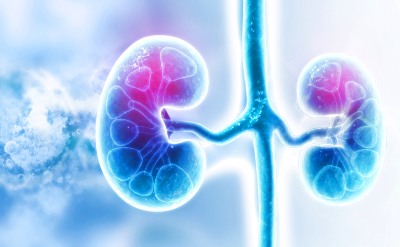Single-agent treatment with savolitinib resulted in similar progression-free survival (PFS) outcomes as sunitinib for patients with MET-driven papillary renal cell carcinoma, according to results from the SAVOIR trial published in JAMA Oncology.
However, patients treated with savolitinib experienced fewer grade 3 or higher adverse events and required fewer dose modifications, results showed.

Sunitinib is the current standard of care for papillary renal cell carcinoma, the most commonly diagnosed form of non–clear cell renal cell carcinoma. However, because the disease is typically MET driven, researchers conjectured that MET inhibition could serve as a more effective targeted treatment approach.
The highly selective MET tyrosine kinase inhibitor savolitinib exhibited encouraging antitumor activity in previous studies of patients with MET-driven papillary renal cell carcinoma.
Toni K. Choueiri, MD, director of the Lank Center for Genitourinary Oncology and the Kidney Cancer Center at Dana-Farber Cancer Institute, and colleagues initiated the randomized, open label, phase 3 SAVOIR study to compare savolitinib and sunitinib in this patient population.
The researchers randomly assigned patients with centrally confirmed, MET-driven metastatic papillary renal cell carcinoma to daily oral savolitinib (600 mg) or daily oral sunitinib (50 mg). Savolitinib treatment was administered continuously, whereas patients assigned to sunitinib received treatment in 4-week cycles, followed by 2 weeks without treatment.
PFS served as the study’s primary outcome measure. Secondary endpoints included overall survival (OS), overall response rate (ORR), duration of response, safety and tolerability.
The study included data from 60 patients (savolitinib, n = 33; sunitinib, n = 27). In both groups, the majority of patients had chromosome 7 gain (savolitinib, 90%; sunitinib, 96%) and no previous therapy (savolitinib, 85%; sunitinib, 93%).
“The low number of randomized patients was owing to this trial being halted prematurely because a concurrent retrospective molecular epidemiology study on the outcomes of patients with MET-driven papillary renal cell carcinoma on sunitinib suggested that MET-driven status did not appear to be a negative predictive factor for treatment outcomes,” the researchers wrote. “It was therefore concluded that the trial would be unlikely to detect a difference in efficacy between the treatment groups, and a decision was made to terminate recruitment.”
The researchers did not observe a statistically significant difference in PFS among the groups (hazard ratio [HR], 0.71; 95% CI, 0.4-1.4). The median PFS for patients assigned savolitinib was 7 months (95% CI, 2.8 to not reached), compared with 5.6 months (4.1-6.9) for patients assigned sunitinib.
The median OS was not reached in the savolitinib group (95% CI, 11.9 to not reached), compared with 13.2 months (95% CI, 7.6 to not reached) in the sunitinib group (HR, 0.51; 95% CI, 0.2-1.2).
Patients assigned savolitinib had an ORR of 27% (n = 9), compared with 7% (n = 2) for patients assigned sunitinib. All responses were partial responses. At the time of reporting, no responding patients treated with savolitinib had disease progression. One of the two responding patients treated with sunitinib had disease progression.
The disease control rate in both groups were similar at 6 months (savolitinib vs. sunitinib, 48% vs. 37%) and at 12 months (30% vs. 22%).
In terms of safety, 91% of patients treated with savolitinib and 100% of patients treated with sunitinib experienced an adverse event of any cause. The researchers observed three deaths attributable to adverse events, all in the sunitinib arm.
Six patients (18%) assigned savolitinib and five patients (19%) assigned sunitinib discontinued treatment due to adverse events. Patients assigned savolitinib required fewer dose interruptions than those assigned sunitinib (27% vs. 56%).
The most common adverse events associated with savolitinib were peripheral edema (33%), increased creatinine levels (27%), aspartate aminotransferase increased (24%) and alanine aminotransferase increased (24%). The most common adverse events associated with sunitinib were anemia (44%), nausea (33%), decreased appetite (30%), thrombocytopenia (26%) and palmar-plantar erythrodysesthesia syndrome (26%).
Thrombocytopenia and/or neutropenia occurred in 37% of the sunitinib cohort, whereas no patients assigned savolitinib developed either adverse event.
“Premature termination of the study and the limited number of patients randomized are key limitations of this study and make definitive conclusions on safety and efficacy difficult to draw,” the researchers concluded. “Though none of the study endpoints reached significance, the limited efficacy data favored savolitinib over sunitinib in this study, and savolitinib showed a superior safety and tolerability profile.”
